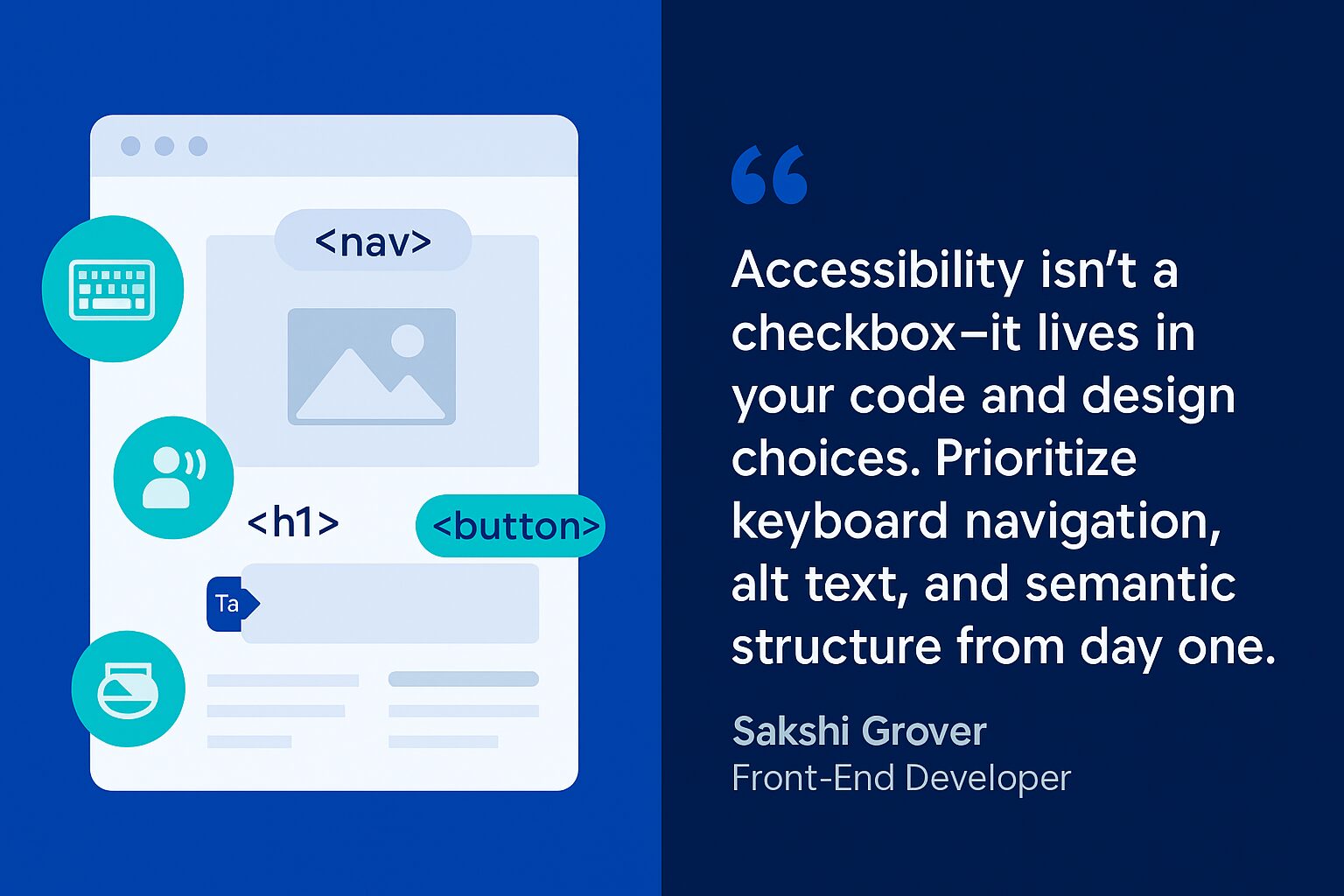TL;DR:
-
ADA compliance ensures your website is usable and welcoming to all users, including those with disabilities
-
Following WCAG standards creates a better user experience and reduces legal risk
-
Accessibility improvements like alt text, logical navigation, and keyboard support benefit all visitors
-
Your site should be continuously updated as accessibility needs and tech evolve
-
Building an ADA compliant website is a long-term investment in inclusivity and growth
Imagine launching a beautiful new site only to realize that a portion of your audience can’t use it. For marketing leaders and digital decision-makers, that’s more than a bad UX. It’s a missed opportunity, a brand risk, and a potential legal issue.
An ADA compliant websiteisn’t just about checking boxes. It’s about ensuring everyone, regardless of ability, can interact with your content, navigate your site, and take action. That inclusivity improves brand trust, broadens your reach, and often improves your SEO and conversion performance.
For marketing managers under pressure to improve results without expanding budgets, accessibility is a smart, scalable win.
What Is an ADA Compliant Website?
ADA stands for the Americans with Disabilities Act. Originally focused on physical spaces, it now includes digital accessibility thanks to legal precedent and DOJ recommendations. A truly ADA compliant website follows WCAG (Web Content Accessibility Guidelines), the industry gold standard for accessibility.
These guidelines are based on four core principles:
- – Content must be presented in ways users can perceive
- – Navigation must work for all, including keyboard-only users
- – Content and UI must be easy to understand
- – Content must work across technologies, including assistive tools
In short: your site should be usable by everyone, not just those using a mouse or touchscreen.

7 Steps to Design an ADA Compliant Website
So, how can you create an ADA-compliant website? Here are seven steps toward building a more inclusive site and adopting the WCAG.
Step 1: Evaluate Your Current Accessibility Status
Before you can improve accessibility, you need to know where you stand. Begin with automated accessibility tools like WAVE or Google Lighthouse. These tools surface issues like missing alt text, color contrast problems, and incomplete form labels.
But don’t stop there. Manual testing matters, especially with screen readers like NVDA or VoiceOver. Can a user navigate your site without a mouse? Can they hear clear instructions on forms or pop-ups?
This first step gives you a benchmark and helps prioritize what to fix first.
Step 2: Use Inclusive, Compliant Visuals
Visuals are powerful, but only if they’re safe and informative for all users.
Here’s how to ensure your graphics follow ADA guidelines:
- Avoid flashing visuals: Anything flashing more than 3 times per second could trigger seizures
- Add descriptions or captions to important visual content
- Ensure color contrast is sufficient between text and background
And remember: a great infographic doesn’t just look good. It should be accessible to users relying on assistive tech. Include descriptive captions or summaries when using complex visual elements.
Step 3: Add Alt Text and Use Readable Fonts
Every image on your site should have meaningful alt text. This isn’t just a best practice, it’s essential for screen reader compatibility. Alt text should describe the image’s function, not just its appearance.
For example:
✅ “Close button for newsletter pop-up”
❌ “Red X icon”
Typography matters too. ADA compliant websites use clear, legible fonts such as:
- Georgia
- Open Sans
- Quicksand
Avoid decorative fonts for body text and ensure your font and background colors meet WCAG contrast ratio guidelines.
Step 4: Make Features Logical and Predictable
User frustration often stems from inconsistency. ADA compliance requires that your interface elements behave the way users expect them to.
Here are some must-do actions:
- Label all forms clearly with both visible text and ARIA labels
- Make interactive elements (e.g. modals, pop-ups) dismissible with a keyboard
- Maintain consistent navigation across your site
- Provide clear error messaging and instructions in forms
This predictability supports both usability and accessibility and often improves bounce rate and conversion performance.
Step 5: Build with Standards-Compliant HTML
Behind-the-scenes structure matters. Many accessibility failures come from poor semantic markup.
Follow these guidelines:
- Use native HTML elements for navigation, buttons, and forms
- Avoid using <div> or <span> as clickable areas without ARIA roles
- Always include text-based alternatives for PDFs and scanned documents
- Test content with screen readers to ensure flow and comprehension
Modern platforms like WordPress support most of this by default, but custom development or plugins can introduce issues. A regular accessibility audit helps catch regressions.

Step 6: Ensure Keyboard and Pause Functionality
Not everyone navigates with a mouse. In fact, many users rely solely on keyboards or assistive devices like sip-and-puff controllers.
Your site must:
- Be fully navigable via keyboard (Tab, Shift+Tab, Enter, Escape)
- Include visible focus states on all interactive elements
- Allow keyboard control over carousels, modals, and dropdowns
- Disable auto-play on video or scrolling content or allow pause/stop functionality
This step directly supports the “operable” pillar of WCAG and is critical for both compliance and usability.
Step 7: Stay Updated as Accessibility Standards Evolve
ADA compliance isn’t a one-and-done task. As technology and user expectations change, so do accessibility guidelines. The Web Content Accessibility Guidelines (WCAG) have evolved through several versions, with WCAG 2.2 now gaining traction.
To stay ahead:
- Subscribe to updates from the W3C Accessibility Initiative
- Schedule quarterly site reviews or audits
- Make accessibility part of your standard QA checklist
- Partner with a strategic support team that monitors changes for you
ADA compliance isn’t a project it’s an ongoing process.
How 3 Media Web Can Help
ADA compliance shouldn’t be overwhelming. At 3 Media Web, we build and maintain accessible websites that meet today’s evolving standards; without compromising design, UX, or performance.
We start by assessing your current accessibility level and provide clear, prioritized recommendations. Then we help you implement best practices across content, design, and development. And because compliance is ongoing, our website support retainers keep your site evolving at the pace of your business, accessibility included.
From alt text to audits, we guide you every step of the way.
Remember: Accessibility Is for Everyone
Building an ADA compliant website is about more than risk mitigation. It’s about inclusion, clarity, and user experience. It’s about making sure every visitor, regardless of ability, can explore, engage, and convert on your website.
And when you build for everyone, everyone wins.
